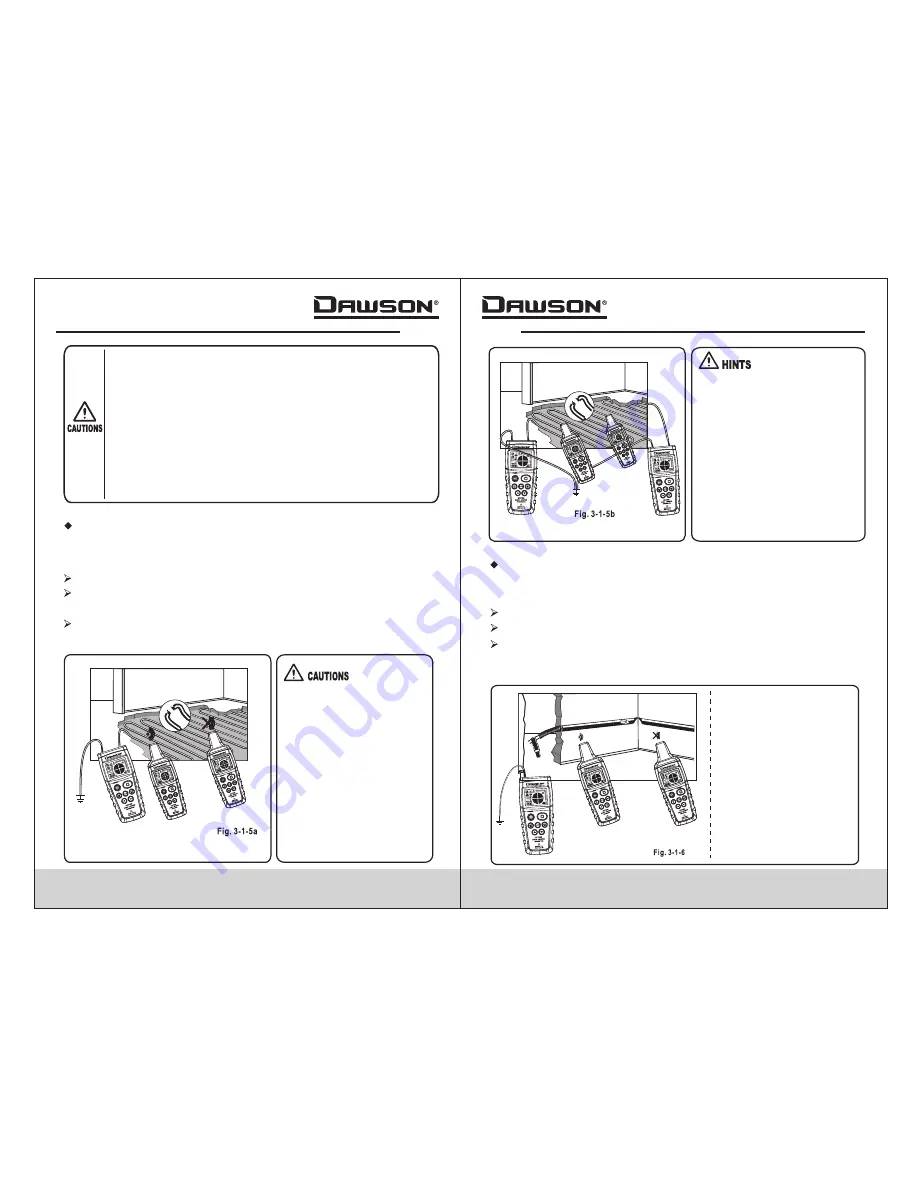
21
22
1. Ensure the ground is connected properly.
2. The transition resistance of the interruption must be higher
than 100k
Ω.
3. When tracking interruptions on multi-line cables, all other
lines inside the cable's casing/conduit need to be grounded.
If not, the transmitter's signal might bleed into other
conductors and throw off reading from the receiver. The
tracking depth for shielded or multi-line cables may differ
due to the lines wrapping around each other.
4. The auxiliary ground connected to the "-" side of the
transmitter can be the included grounded rod, the ground
line of a grounded socket, or any other apparatus that is
properly grounded.
3.1.5 Tracking interruptions in an electrical floor
heater
CANNOT be a live circuit
All parallel lines not used need to be connected to an
auxiliary ground
Connect transmitters to opposite sides of the line as in
fig. 3-1-5b
1. If there's a shield mat
above the heating wires, a
ground connection might
not exist. If necessary,
separate the mat from the
ground connection.
2. Ensure the ground is
connected properly. There
should be considerable
distance between the
ground terminal of the
transmitter and the target
line. If not, the interruption
might be difficult to
precisely locate.
Preconditions:
1. The point at which the signal
received by the receiver
drops abruptly will be the
location of the interruption.
2. Adjust the transmitter level
to compensate for differing
detection depths.
3. In manual mode, the proper
sensitivity setting is crucial
to locating the interruption.
4. For use with a single
transmitter, see fig. 3-1-5a.
For use with 2 transmitters,
see fig. 3-1-5b.
3.1.6 Detecting narrowing or blockage within a
nonmetallic pipeline
Pipeline must be made of a non-conductive material.
Pipeline cannot be charged
Connect transmitter to a metal tube/flexible conduit
(inserted into the pipeline) and to an auxiliary ground
as shown in fig. 3-1-6.
1. If there is current
present in the pipeline,
disconnect power and
properly ground the
pipeline so no current is
present when power is
turned on.
2. The ground of the
transmitter needs to be
far enough away from
the pipeline in order for
the signal to be clearly
received by the receiver.
Preconditions:








































